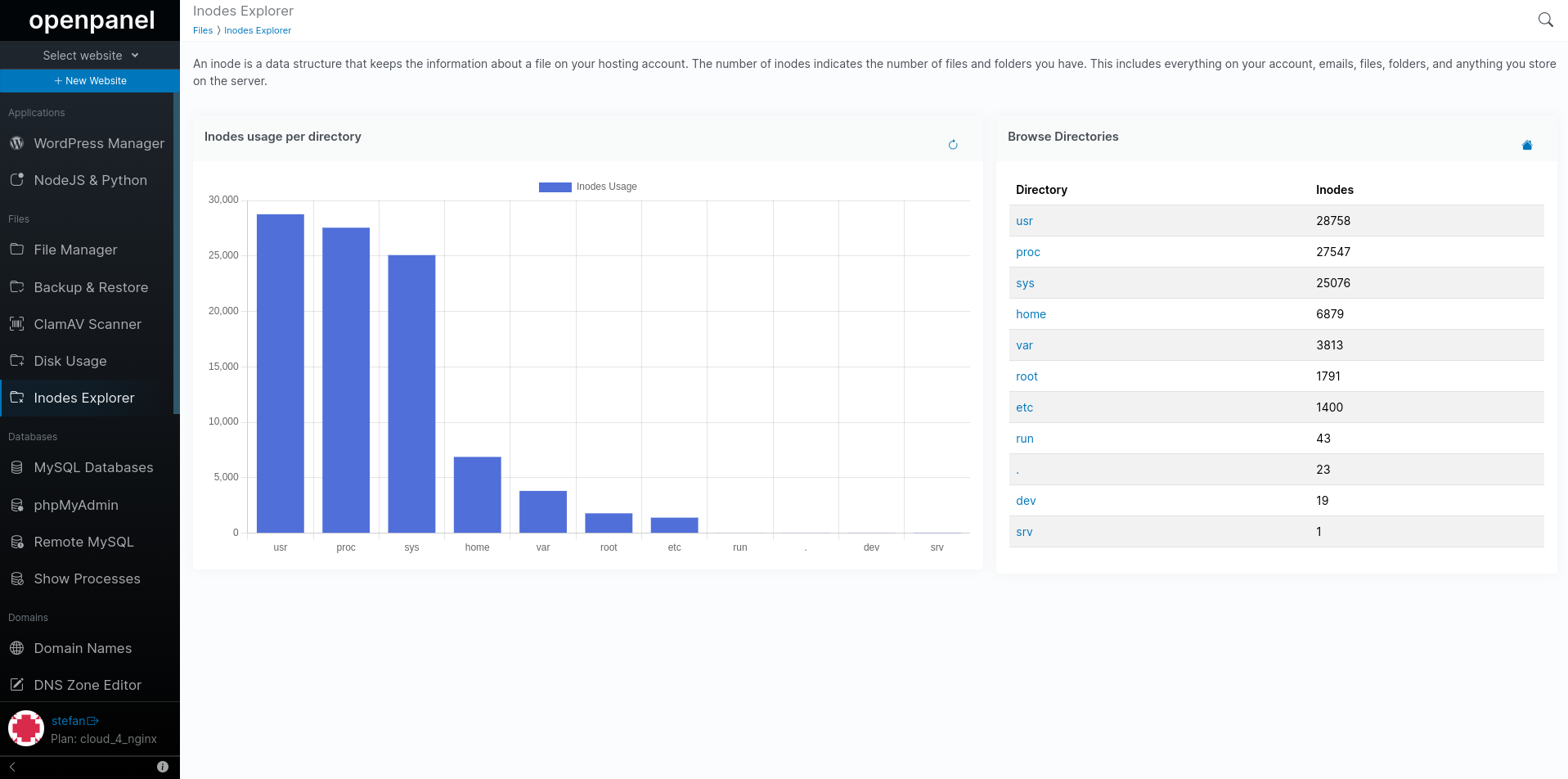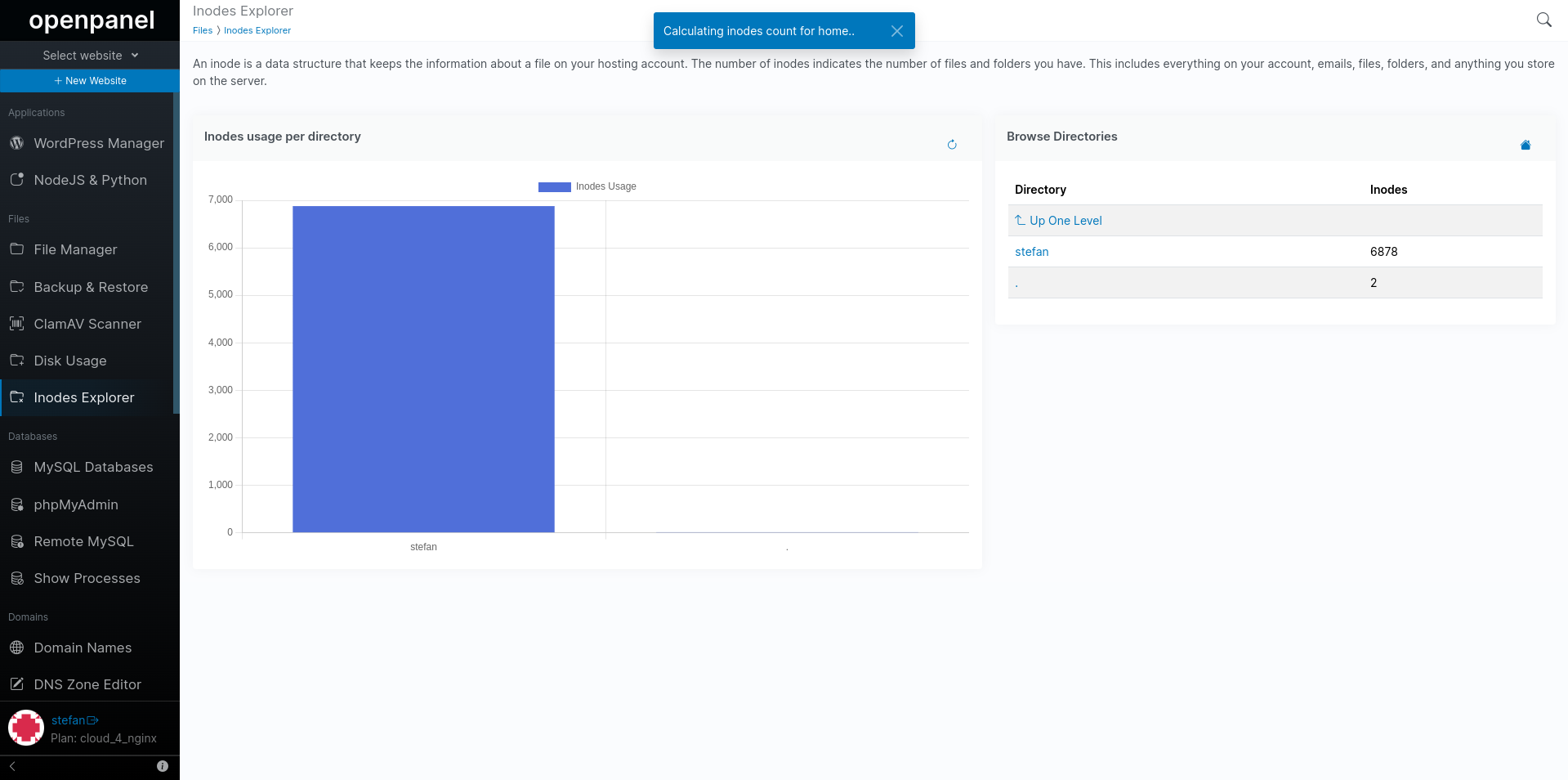Inodes

Introduction to Inode Usage
Inode usage is a critical aspect of managing your hosting environment. Inodes are data structures that store information about files and directories on your server. Monitoring and optimizing inode usage is vital to prevent issues related to inode limits.
Inode Usage Chart
The Inode Usage Chart provides a visual representation of inode usage across directories. It enables you to identify areas with high inode consumption and take action as needed.
Browsing Inodes
The "Browse Directories" section presents a table listing inodes, their associated files and directories, and their inode counts. This table allows you to navigate through inodes and assess their usage.
To explore a inodes for a specific directory, click on the directory name in the table.
To navigate to the parent directory, click on "Up One Level."

Usage Example
Suppose you need to check the inode usage of a specific directory. Here's a simple guide:
- Navigate to the "Browse Directories" section.
- Click on the file or directory you want to inspect.
- Review the inode count.
Lowering Inode Usage
Optimizing inode usage is crucial for maintaining your hosting environment's efficiency. Here are strategies to reduce inode usage within OpenPanel:
Regularly Clean Up Unnecessary Files
- Delete Unused Files: Periodically remove files that are no longer needed, such as outdated backups, temporary files, and old logs.
- Remove Unnecessary Duplicates: Check for and remove duplicate files or unnecessary copies.
- Delete Cache Files: Periodically delete cached files of your websites to free up inode usage and ensure efficient resource management.
- Empty Trash: Ensure the trash is emptied regularly to permanently delete files.
Efficiently Manage Directories
- Organize Files: Keep your directories organized, avoid unnecessary subdirectories, and reduce nesting when possible.
- Archive Old Data: Archive older data and directories to secondary storage or external services.
- Implement Content Delivery: For large number of media files, consider using external hosting services or CDNs.
Troubleshooting
If you encounter issues related to inode usage, consider these steps:
- Verify your permissions to access inodes and directories.
- Ensure that your inode usage data source is correctly configured.
- Clear your browser cache if you encounter display problems with the Inode Usage Chart or table.
By following these best practices and maintaining efficient inode usage, you can prevent inode exhaustion issues and ensure the smooth operation of your hosting environment.